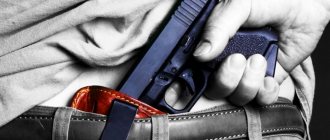Issues of fraud and shoplifting involve not only customers, but also staff. One can debate which of them is responsible for the greater losses. In practice, this indicator may vary depending on the assortment, location of the outlet and the security system features of a particular store. The experience of our clients shows that the ratio between the volume of losses from customers and staff is approximately 50 to 50, with a slight advantage in favor of the latter. That's why retailers are forced to fight on both sides and take advantage of self-service technologies to reduce losses.
You may immediately have a question: trusting customers to independently carry out almost all operations in the store: scanning, weighing and payment, they will probably have to deal with increased losses? However, independent studies show that after the introduction of modern self-service systems, store losses from theft at least do not increase, but, in most cases, decrease.
There are four popular self-service technologies today:
- self-service cash register (classic Self-Checkout);
- separate scanning;
- self-scanning;
- hybrid cash register.
Each of these technologies has its own advantages and successfully solves the problems facing different store formats. And, as a bonus, it helps fight fraud both on the part of the buyer and on the part of the cashier. Let's look at how this works using the example of each technology separately.
Self-checkout
Self-checkout is a special device that allows the buyer to independently scan, weigh and pay for goods.
Retailers install it to relieve pressure on the checkout area and reduce the need for staff. Self-Checkout takes up less space than a classic cash register unit, which allows you to place a larger number of cash register lines in an equal area. This solution is most effective when there is a small number of items in the cart and an uneven flow of customers. With this self-service organization, staff are not involved in working with cash and the scanner. And all transactions performed by the buyer are controlled by an impartial machine. You can’t collude with such a cash register, and it won’t cheat—the latter especially hits the store’s reputation: the cashier cheated (even if not on purpose), but it is perceived as if the retailer cheated.
Since when working with a self-service checkout, the buyer is entrusted with part of the cashier’s functions, the solution provides a security system that monitors the correctness of the transactions performed. One of the classic options: a system for monitoring goods by weight - the program knows the weight of all goods, and, unnoticed by the buyer, checks it with each scan. Such a system is intelligent and self-learning.
Sometimes the system for monitoring goods by weight is equipped with image recognition and size measurement sensors. But this approach is rarely used due to its unreliability. In addition, any complication of the system leads to slower customer service. And the excessive “strictness” of the control system settings generates an excessive number of situations requiring personnel intervention.
In fact, there are not so many situations when a client tries to steal something. Often incidents arise due to buyer actions, which cannot always be included in the system algorithm. The system believes that something went wrong and transmits a signal to the store staff. Therefore, your security settings should strike a balance between control and trust.
An important digression. A rough estimate shows that about 95% of buyers never steal, 3% doubt it, and, given the right opportunity, may try to cheat. Another 2% are those who will always try to deceive the store and professional thieves. It is almost pointless to fight the latter; in any case, they will find a way to bypass the obstacle, both in the form of a regular cash register and in the form of any self-service system. Therefore, it is working with a doubting audience that brings the greatest results. Most often, in order to stop it, the very presence of attentive staff and video surveillance in the self-service area is enough.
Another important feature of Self-Checkout, compared to a regular cash register, is fully automatic cash processing. This almost eliminates the risk of accepting counterfeit banknotes for payment and attempted fraud using the scheme “I gave you more money - why is there so little change?”
Results:
- staff no longer have access to money, they cannot make mistakes in calculations, deceive the store or the buyer;
- control of scanning accuracy is transferred to an automatic security system, which eliminates the possibility of collusion with staff;
- The buyer's payments, including cash, are made using the payment module, which allows automatic control of the authenticity of banknotes, the amount of funds received and the amount of change issued.
| In what cases is the anti-theft system not effective? |
| Shortages and personnel |
| All pages |
Once you open your clothing store , you will find that some customers steal . Well, this must be accepted as a fact. They steal from hypermarkets and markets, and they will steal from you too. Fortunately, your product is not worth so much that you need to worry seriously about individual thefts . The main thing is to learn how to identify potential thieves and stop their actions. Below we will look at what types of theft a clothing store owner typically encounters . But first, let's outline the main types of shoplifters .
Types of shoplifters.
- Professional thieves . They steal the most expensive clothes specifically for the sake of resale, they know perfectly well how to distract the seller and deceive the anti-theft system security weaknesses , and they often act in groups. The most dangerous category of thieves.
- Amateur thieves. They steal from time to time, mainly for things that were sent to them for personal use, sometimes they get caught, sometimes not.
- Extreme students. They steal for the thrill of everything that they think is bad. With enough attention from sellers, thefts by this group can be prevented.
- Drug addicts. Due to the loss of the working capacity of most of the brain, stealing is crude, but can be dangerous to the health of sellers. Easily identified by their appearance (bulging veins, lethargy, glassy eyes), they usually walk alone or in pairs.
- “Pregnant” , real or simulating pregnancy. They take advantage of the fact that a pregnant woman is more trustworthy.
- "Ours" . With a properly installed accounting system, theft by your own staff in clothing stores can be avoided.
A few words on a legal topic
Without going into the intricacies of the legislation, we will immediately say that if the theft is not recorded on video , you will practically not be able to bring the thief . The most you can do is return the item back and the thief go. They know this and act very brazenly.
Robbery in broad daylight.
One of the most difficult types of theft . Usually carried out by a drug addict , often in withdrawal. The person simply grabs the nearest thing and tries to escape with it. Since he usually does this in stores where there are no security guards, he often succeeds. Of course, no anti-theft system will help here. Moreover, if the seller tries to stop him, the drug addict can use force, and in addition to the item, the seller will also suffer. Sometimes calling a security detail using a panic button helps, but in most cases the robber manages to escape successfully. Fortunately, drug addicts are easy to recognize among visitors, and if you show them this, they will quickly leave the store without committing theft .
Substitution of labels.
Used in large stores where sellers do not remember every item. The most detailed information about the product on the price tag almost completely saves you from this method, while the seller, when selling, is obliged to check the correspondence of the price tag and the item. Also, a 99% effective way to combat this type of fraud is to attach tags to clothes using anti-theft system .
Theft from the hall.
The attacker usually uses a specially prepared bag or package with a paper frame inserted into it to make it appear full, but in fact it is empty. To bypass the anti-theft system, the bag can be lined with foil on the inside. During the cold season, bulky clothing is used, under which stolen items . They usually steal lightweight T-shirts and tops that can be easily pulled off their hangers with one hand. But a professional thief can easily roll up a pair of jeans in five seconds.
Theft in fitting rooms.
The largest percentage of thefts in fitting rooms . From the outside it looks like this: the attacker takes, say, 5 things into the fitting room, and takes 4 out. Somewhere between them, he hides the freed shoulder, which he then calmly hangs in place. Some people leave the hanger right in the fitting room there should be no places or crevices in your fitting rooms Naturally, the salesperson should check the fitting room after each client.
It should be noted that, left with things in the fitting room, a thief can do anything, including neutralizing the anti-theft tag . Of course, the attentiveness of the seller saves from such theft - he must count the things that buyers take to the fitting room and then return. In case of obvious theft, you must block the entrance to the store and call security. However, it is difficult to deal with the group version of this theft, when the thief transfers the item to a neighboring fitting room, from where his accomplice calmly takes it out and you will no longer be able to present anything to the remaining attacker.
"Carousel"
This is a very dangerous method, in which up to 8 or more attackers are involved, and the losses are very painful. The store is filled with people who seem to have no connection with each other, they begin to walk along the aisles, some distract the sellers, and meanwhile things quietly disappear from the racks. The only way to do something in this situation is to block the entrance and call security.
“Teeth charm” to the cashier
For this method, attackers usually choose what they consider to be inexperienced salespeople and cashiers. The attacker seems to want to buy an inexpensive item, but he allegedly wants to pay with a large bill. He waves this bill in front of the seller’s nose for quite a long time, “talking his teeth,” then, as it were, he begins to pay, and puts the bill on the counter. At this moment, the seller is distracted by something (often by an accomplice), and the scammer quickly hides the bill. After this, he begins to brazenly claim that he gave away the bill and demands change. An experienced seller cannot be fooled so easily, but inexperienced ones often hesitate and hand over change from the money they did not receive, and even give away the goods in addition. That is why, when taking a bill, it is necessary to pronounce its denomination (“Your 1000 rubles”), and when giving the change, count it out loud in front of the buyer. Also, this method of fraud is not used if the store is video recording.
In what cases is the anti-theft system ineffective?
The purpose of the anti-theft system is to give a signal if a special sensor-tag is carried through it. The fact that even in this case it works only in 80-90% of cases is not particularly discussed, but it is a fact. Unfortunately, many attackers know how to neutralize or even remove the tag, and here the system will be powerless.
For example, thieves actively use foil bags for shoplifting (“Booster Bags”) and foil-lined clothing pockets. Goods placed in such bags or pockets are almost impossible to detect using anti-theft systems . To combat such devices, special metal detectors are used.
There is also a scheme in which scammers pretend that the system is broken (signals with almost every visitor), and the security simply stops paying attention to the signals. Finally, it is not enough to receive a signal from the system; there must be a security guard who could catch up with and neutralize the attacker. Ask traders at markets how often drug addicts offer to buy items with tags attached at half price, and draw your conclusions. Therefore, the anti-theft system makes sense:
- when there is a large area and few sellers (less than 1 per 50-60 sq.m.), a security guard is required;
- in shopping centers, since security guards there are usually included in the rent.
The system doesn't make sense:
- in departments and free-standing stores without a security guard
- in small departments up to 30 sq.m.
Often tags on clothes serve as a purely psychological barrier for unprofessional thieves. CCTV cameras or their dummies can serve as the same barrier .
Theft by staff
Such thefts are common in large stores with dozens of employees and are a huge headache for their security teams . In small stores, it is quite possible to reduce this type of theft to a minimum. What is needed for this?
Since the staff in a small store rarely exceeds 2-3 people, it is quite possible to select non-random, honest sellers. The main thing is not to provoke theft yourself by lack of control and accounting. It is necessary for every seller to know that any theft will be detected fairly quickly. Due to the small number of sellers in a small store, the shortage hits the pockets of every employee, which is a strong psychological factor: it is one thing to steal from the “owner” (he is already rich, he will not become poor!), and another thing to steal from his comrades.
Of course, it is completely unacceptable to bring your relationship with the seller to the point where he seeks to punish you by stealing your clothes. From the very beginning, build an honest and open relationship with him, pay him adequately for his work and do not give reasons for offense. The seller, offended by unfair treatment, has a kind of psychological justification for such an act.
In addition to stealing things , staff can commit various types of cash register fraud, in particular - not punching a receipt, and the actual item sold will be considered stolen . In addition, in the event of an audit, failure to clear a check threatens the entrepreneur with fairly large fines. There is a simple but quite effective method of combating this phenomenon. Place a sign at the checkout with the following content: “If the seller did not return your receipt, he paid for your purchase.”
Let us repeat that with a properly organized accounting and automation system, the risks of cash register fraud tend to zero.
What to do with the shortage.
If you place the responsibility for shortages entirely on salespeople, this may cause them to react negatively, even if their salaries are relatively high. In clothing stores, it seems most reasonable to introduce the concept of “ permissible percentage for theft ,” calculated depending on monthly turnover. It is usually fair to set it at 0.5-0.7% in warm months and 0.7-0.8% in cold months.
Separate scanning (Scan&Pay)
With the self-service technology “Separate scanning” (Scan&Pay), the store employee does not make payments to the buyer. He only scans the goods and generates a pre-check, according to which the buyer pays at the payment terminal. As with self-checkout, staff do not have access to the cash supply. The only option for possible fraud: the scanner may not scan some of the goods for “its” buyer. The same scenario is often used at regular cash registers.
However, the task of fraudsters is more complicated compared to a regular cash register. After paying for purchases at the payment terminal, along with a cash receipt, a ticket is printed for the buyer to exit through the automatic gate. At this point, according to a special algorithm, additional unnoticed control by security officers occurs. Based on data from the scanning and payment system, security receives information about the contents of the paid cart and carries out remote visual control of the goods in the buyer’s cart. Thus, in case of suspicion, security can check whether the actual contents of the package correspond to the paid check. In a regular store, there is no such additional mechanism for monitoring the goods of exiting customers, and the wide checkout line does not allow placing a security guard at each exit.
Unlike self-checkouts, split scanning has no limit on the number of purchases in the cart, and works equally well with both single items and full carts in hypermarkets. Scanners quickly scan and package items. There is no need to wait for the previous buyer to make a payment, since payments are made at payment terminals, of which there are significantly more than scanners. This approach allows you to effectively work with a large flow of customers and avoid the formation of queues.
Results:
- the scanner is not a cashier and does not have access to cash;
- the buyer makes payments automatically at the payment station;
- an additional mechanism appears to control all customers leaving the payment area.
Hybrid cash register
A hybrid cash register is a cash register unit designed for the simultaneous operation of a seller and a buyer. On one side, the seller weighs, packages the goods or prepares the ordered dishes, entering the necessary data in the cash register program interface. On the other hand, the buyer interacts with the built-in payment module: deposits cash and receives change. Most often, this technology is used in small stores with an “over-the-counter” service format, cafes and other organizations where the participation of staff in preparing goods and a shopping list is necessary, but the task is to exclude its contact with cash, including for hygienic reasons. What are the advantages of this technology?
First, the seller again has no access to the money supply.
Secondly, the problem of hygiene is solved. You yourself know very well that money, to put it mildly, is not clean. Therefore, the seller cannot, with the same gloves in which, for example, puts a bun in your bag, accept payment and then reach for another product.
Thirdly, personnel for a retailer are cheaper: the seller’s salary is always higher if he deals with the money supply.
As for working with the buyer, the hybrid cash register not only accepts payment, but also:
- recalculates cash - that is, the likelihood of human error is reduced when the buyer, for example, unintentionally did not report the bill. The opposite is also true: errors with delivery are also excluded;
- verifies the authenticity of banknotes and coins.
At the same time, the seller does not have any access to cash processing modules.
And the necessary replenishment and collection can, among other things, be carried out using special cassettes, similar to an ATM. This also makes it more difficult for unauthorized persons to access cash - unlike a cash drawer that opens at every payment. Results:
- contact of personnel with cash is eliminated;
- settlements with customers are carried out automatically, checking the volume and authenticity of the money deposited;
- the money cannot be given by the staff to the robber, which is especially true for small retail outlets where there is not always security.
Self Scan
Self-scanning is a technology that has recently been gaining popularity, both in our country and abroad.
It is especially promising from the point of view of working with customer loyalty and providing fast service without unnecessary waits at the checkout. By introducing it, the retailer seems to be telling the store’s customers: “We trust you.” The self-scanning technology is organized as follows: participants in the retailer’s loyalty program, upon entering the sales area, receive a personal scanner (specialized TSD) or launch a branded application on their own smartphone. With their help, they scan the selected items before adding them to the cart, thus forming a shopping list - a future receipt. When a person completes the cart, he presses the “Pay” button in the smartphone application or on a personal scanner (PSD). And then he pays for purchases either at the classic checkout, or at the self-service checkout, or directly in the application.
In order for the retailer to be sure that all the goods in the cart have been scanned by the buyer, the system provides various algorithms that analyze human actions on the sales floor. There can be dozens of such controlled parameters - they are configured by the retailer himself. If the system detects suspicious actions, the buyer is subject to verification: partial or complete scanning of goods from the cart. It is also possible to manually assign a check to security personnel.
Another important point about using self-scan technology is that not all buyers can take advantage of this privilege. It is available only to members of the loyalty system: which means that the buyer is not impersonal. Each person registered in it has a personal level of trust, which, together with customizable monitoring algorithms, helps the system ensure the security of the retail outlet.
Results:
- it is possible to exclude personnel from cash transactions;
- maintaining a personal level of trust allows you to focus attention exactly where it is needed, providing additional freedom and convenience to loyal customers;
- when using payment terminals, automatic control of the correctness of calculations and the authenticity of cash is carried out;
- exit from the payment zone is additionally controlled in the same way as in a separate scanning system.
All of the above technologies have their own characteristics. It is important to remember that security benefits are achieved not only by choosing a specific system, but also through proper configuration, implementation and organization of personnel. Each individual technology requires its own adjustments. Even the best safe will not save you if the staff leaves the keys in the lock. A competent approach can only be implemented by contacting a serious organization with extensive experience in implementing such projects. Otherwise, as often happens, the equipment and solution will be nothing more than a piece of store interior, and the efficiency of using the funds spent on implementation will be negligible.
Types and methods of theft of goods by buyers
The basic principle that guides thieves is the same as in the case of their own employees - if the opportunity to steal exists, then it must be realized. And buyers usually have no less such opportunities than store employees.
A customer can try to steal something from a store in a variety of ways: steal the product, cheat when returning it or using a credit card, or steal cash from the cash register. After reading this chapter, you will learn how, when and what methods of theft are commonly used by customers and what you need to do to prevent them.
It should be noted that no matter what controls you put in place, they will not stop some customers from attempting to shoplift. What should you do if a dishonest buyer is caught by the hand? Below we will give some basic recommendations. But only you can determine the best way to prevent theft in your store. By the way, methods of combating theft are partly determined by the legal system and the current legislation of the country.
There are three basic rules that you need to follow if you have any doubts about the buyer’s honesty (just don’t take these rules as dogma - they only define the basic principles of your behavior).
a) You should see that the buyer took the goods and hid them.
b) Before presenting a claim to the buyer, observe him for a while after he hides the goods.
c) You need to be absolutely sure that the buyer has not paid for the goods.
If you have no doubt that a store visitor has not paid for a purchase, do not hesitate to detain him and call the police. Taking goods without paying for them is a crime. Because of such thefts, American store owners lose millions of dollars every day, and some simply go bankrupt.
On the other hand, do not forget about the safety of your workers. Moreover, this factor should be the main one: if the capture of a robber threatens the safety of store personnel, then it is better to let the thief leave, no matter how much the stolen goods are worth.
1. General information
Thieves use a variety of methods to steal goods from a store. The owner or manager of a store must first understand that dishonest customers are divided into two main categories: professional thieves and amateur thieves. “Amateurs” significantly outnumber professionals, but the losses caused by professionals are much more significant.
Professional thieves
They earn their living by shoplifting, reselling everything stolen (cases when a professional thief keeps something stolen for himself are extremely rare). Typically, the thief receives from the buyer from 25 to 50% of the retail price of the goods handed over. A characteristic detail: professionals try to steal goods in branded packaging, since this makes it easier to sell it to a buyer of stolen goods.
Naturally, in one visit to the store such a thief will try to steal the maximum possible number of units of goods (for example, up to ten packs of batteries). Therefore, it is very important that in the sales area such products are displayed on special holders that allow only one package to be removed at a time. Professionals visit the same store so often that the staff begins to mistake them for regular customers. The only problem is that they never buy anything! A professional thief “works” both alone and with a partner.
A loner, as a rule, tries to establish friendly relations with store staff and steals goods at a time when, trusting him, the sellers are busy with another buyer. But it also happens that he mixes with a crowd of other visitors and, trying not to attract attention to himself, stuffs the stolen goods into special pockets. Working with a partner makes the thief's task partly easier, since the partner (or partner) distracts the sellers' attention with special questions or awkward actions, giving him the opportunity to calmly steal the goods. Sometimes professionals “work” with children, who are used both as cover and as “pockets” in which stolen goods are taken out of the store. The income from such thefts is usually somewhat higher than that of a lone thief, but in this case the risk of being caught also increases (for example, due to unsuccessful actions or excessive talkativeness of a partner).
"Travelers"
“Travelers” are groups of thieves who wander from store to store, from city to city. This type of thieves steals not only goods, but also money.
Typically, in a store, a group of “travelers” disperses around the sales area. Then two or three people create some kind of chaos to distract attention. While store employees deal with them, the rest of the gang tries to steal either the goods on display or money from the cash register, and sometimes from the safe. If they are noticed doing this, then, taking advantage of their numerical superiority, they create fuss and confusion, involving ordinary buyers in the fray, after which they try to escape unnoticed. It is quite difficult to pursue them, since no one knows either them or the addresses where they might go.
Amateur thieves
The “amateur” does not steal for his own food. Very rarely they steal goods out of necessity, due to lack of money. It happens that an ordinary person is pushed to steal, for example, by friends or parents. But more often, amateurs steal simply out of nothing to do, for the thrill of sensations - among such thieves you can often find very wealthy people who have fun with thefts.
For amateurs, as in the case of store personnel, the basic principle applies: if there is an opportunity for theft, and the risk is not very great, then an attempt at theft will immediately follow. Or the thief knows in advance that the store owner will not contact the police (for example, he did not do this in the previous case).
2. Basic techniques used by kidnappers
Common theft
Shoplifters—professionals and amateurs alike—can hide stolen goods in their clothing or inside other merchandise. The fraudster pays for one type of product and takes away another along with it.
Scenario one: Professional thief
A professional thief regularly visits stores selling construction materials and equipment, posing as the owner of a construction company. In reality, he steals goods for resale, receiving approximately 30% of their retail price. Some of the stolen goods subsequently end up in markets, while others end up in competitors' stores.
A professional leaves the store with, say, 20 circular saw blades hidden in his belt, ten pieces each in front and behind. Over the course of 10 years, the average annual income of such a thief is $90 thousand. This means that the value of the goods he stole during this time was $270,000!
About 80% of professional thieves specialize in stores of a certain profile.
Control your weaknesses
• These stores provide poor customer service.
• Store staff are not trained in anti-theft techniques.
• Use equipment on the sales floor that does not allow the customer to take more than one item at a time.
.Many professional thieves use various “homemade items” at work - bags, boxes or “diplomats” with secret pockets in which they hide goods, or use a special bottom in the bag, which allows them to pick up the selected product and quietly take it out of the store. Often, theft specialists sew secret pockets into clothes, wear belts with hooks, or wear two pairs of trousers at the same time - the trousers are sewn tightly at the bottom, thereby forming one large pocket into which a thief can safely put a variety of goods without fear of them falling out.
A female thief can pretend to be pregnant using an ordinary pillow. Once in the store, she picks up more clothes and goes to the fitting booth. There the pillow is removed and placed in a bag, and neatly folded goods are placed in its place. The appearance of a pseudo-pregnant woman, naturally, does not change. Sometimes an “inflatable” pillow is used, into which the thief, after releasing the air, packs the stolen items.
In order to hide stolen goods, a variety of items are often used - umbrellas, newspapers, and other goods from the same store. In addition, there are often cases when your product is hidden in a pre-purchased branded package from another store. Therefore, the store owner should train cashiers to check all items that could be used as a container for theft, for example:
— brushes can be hidden in paint rollers;
— jewelry is placed in various boxes and bags;
— drills or punches are placed in garden watering hoses;
— a silk scarf easily fits in a jacket or coat pocket...
This list can be continued endlessly. Having taken any product, you must answer the questions for yourself: “Where would I hide it?” and “Can I put anything inside this item?” Train your employees to look at goods the same way, and a lot of petty thefts can be prevented.
Substitution of labels
Switching labels or price tags is another way to commit shoplifting. The fraudster removes the label from a discounted or simply cheaper product and attaches it to a more expensive one. If none of the staff notices the substitution, the buyer will pay a low price for some expensive item. Labels are easy to change only if they come off the product without damage.
The same method is used when stealing goods that have a label on the lid. Often, the manufacturer puts the same lids on jars containing the same product, but with different capacities. It costs nothing for a thief to take the lid from a smaller package and place it on a larger one. As a result, the swindler pays a lower price for a larger volume of goods.
Substitution of goods
Product substitution is an option for label substitution. For example, the cheap contents of one box are replaced by more expensive ones taken from another package. The scammer pays for a cheap product, but in fact takes away an expensive one.
3. Precautions
a) Meet each customer at the entrance and do not forget about his presence in the store.
b) Find a place in the store from which all customers can be seen.
c) Do not turn your back on the buyer.
d) Closely observe customers wearing baggy, bulky clothing or carrying baby strollers.
e) Goods that for some reason are not located where they should be, immediately return them to their place.
f) Place the product so that any shortage is immediately noticeable.
g) Do not display expensive or easily portable items near the exit of the store.
h) Be prepared for someone to distract your attention.
i) Regularly check the contents of printed product boxes.
j) Use labels that cannot be easily separated from one type of product and discreetly attached to another.
k) Do not put labels on the lids. This rule applies to all goods packaged in interchangeable containers.
Precautions for Travelers
a) If a group of customers enters the store, be alert.
b) Store personnel should not leave their jobs if such a group tries to cause any scandal.
c) Product displays must be locked at all times and their contents must be checked if any disturbance occurs.
d) Lock the safe. This should be done between any operations with its contents, even if you know that in a minute you will need to open it again.
e) Lock cash registers and do not leave them unattended. Remember that "travelers" know how to use the "no sale" key to open the cash drawer;
f) If you find any goods missing, call the police immediately.
Download: 1. E-book “Protecting the supermarket from theft” - Please Login or Register to access this content








